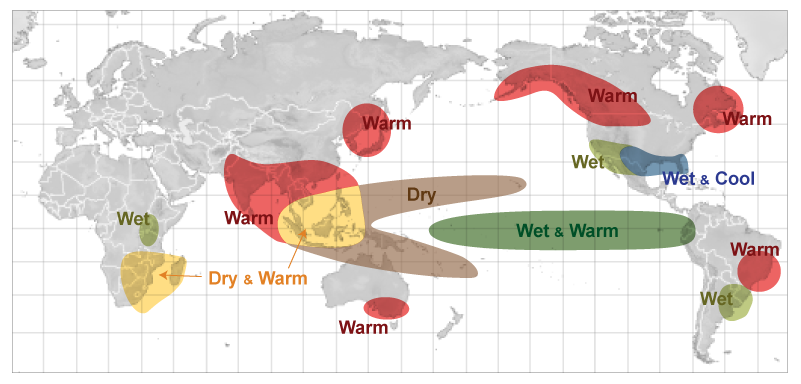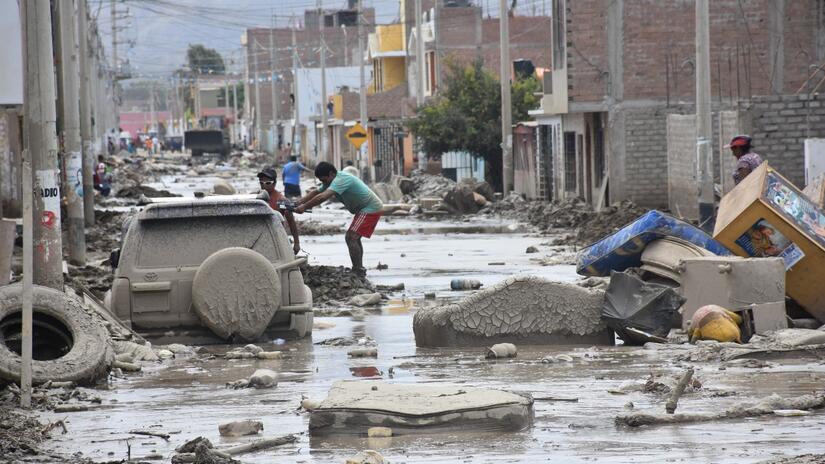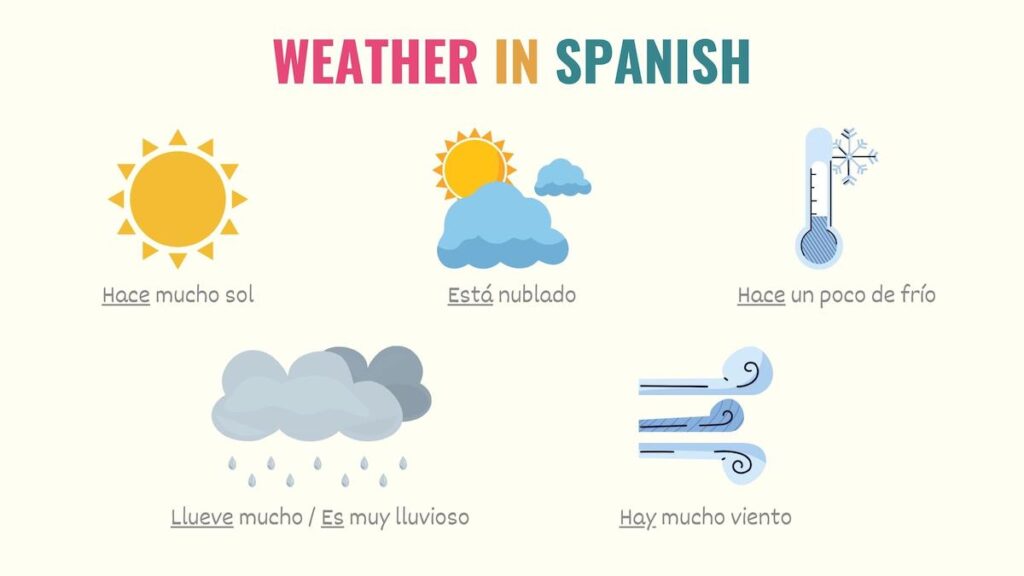A weather phenomenon with a spanish name nyt, like El Niño, is something that fascinates many people. If you’re interested in learning about weather events and their unique names, this post is perfect for you. The name “El Niño” itself is weather phenomenon with a spanish name nyt, meaning “the little boy,” and it refers to a specific kind of climate change pattern.
In this blog, we’ll explore how El Niño impacts weather phenomenon with a spanish name nyt around the world and why it has such a special name. weather phenomenon with a spanish name nyt terms like this have interesting backgrounds, and understanding them helps us learn more about how our environment works. Keep reading to find out all about El Niño and other weather phenomenon with a spanish name nyt that may come with Spanish names.
The Impact of El Niño on Global Weather Patterns
El Niño has a big effect on weather phenomenon with a spanish name nyt all around the world. This warming of ocean waters in the Pacific doesn’t just stay in one place; it causes changes that can reach far-away countries. For example, places that are usually dry might get a lot of rain, while places that often have rain might see drought. This is because El Niño changes wind and air patterns, which can make weather behave in surprising ways.
During an El Niño year, we might see stronger storms and warmer winters in some areas. This can lead to floods, especially in areas close to the Pacific Ocean. In other places, like parts of Asia and Australia, people may experience less rain, which can be hard for farmers. This weather phenomenon with a spanish name nyt really shows how changes in one part of the world can have effects everywhere.
El Niño can even impact ocean life. Warmer waters mean fewer nutrients for fish, which can harm fishing industries. So, El Niño not only changes the weather but can also affect jobs and food supplies. It’s amazing how much a warm ocean can do to the world’s climate!
How El Niño Affects Climate in Different Regions

El Niño has different effects depending on where you are. In North and South America, for example, it often brings warmer and wetter weather phenomenon with a spanish name nyt. This can be good for some plants but can also lead to flooding and problems for farmers. Places like California sometimes get heavy rains during El Niño, which can help with droughts but also lead to mudslides.
In Asia and Australia, El Niño usually brings drier and hotter weather. This can be tough for crops, as there is less water to grow food. In some cases, it may even lead to wildfires because of the dry conditions. Farmers and communities in these areas prepare for El Niño years by saving water and watching for droughts.
El Niño can also affect the fishing industry in places like Peru, where fish rely on cool, nutrient-rich waters. When El Niño warms the water, fish are harder to find, which can hurt the local economy. These regional effects show that El Niño is a powerful weather pattern that reaches many parts of life across the globe.
El Niño and La Niña: The Dynamic Spanish-Named Duo
El Niño and La Niña are like two sides of the same coin. While El Niño warms the ocean, La Niña cools it down. La Niña, which means “the little girl” in Spanish, brings different weather changes compared to El Niño. La Niña often leads to cooler temperatures and can even increase rainfall in some areas. Together, they form a natural cycle that switches between warmer and cooler ocean conditions.
When La Niña happens, it can bring wetter weather to places like Southeast Asia and Australia, which may help farmers but can also cause floods. In the United States, La Niña might mean warmer winters in the south but colder ones in the north. This back-and-forth cycle affects many countries and can change how we plan for seasons and weather events.
While El Niño and La Niña are opposites, both are important for scientists to study. Knowing when one of them is likely to happen helps people prepare for possible floods, droughts, or other extreme weather. These Spanish-named weather phenomena remind us that our climate is always changing, with each phase bringing its own set of challenges.
History of the Weather Phenomenon with a Spanish Name in NYT

The term “El Niño” has been used for a long time and has become well-known around the world. Fishermen in Peru were the first to notice this warm ocean pattern, often happening around Christmas. That’s why they named it “El Niño,” or “the Christ child.” The New York Times (NYT) and other news sources began covering El Niño as scientists learned more about its impact on global weather phenomenon with a spanish name nyt.
In the 20th century, El Niño became a bigger topic in the news because its effects could no longer be ignored. As scientists discovered how this weather phenomenon with a spanish name nyt affected places as far as the United States, the NYT and other media reported on it to help people understand why they might see unusual weather.
Today, El Niño is well-known, and news outlets like the NYT keep people informed about it. They explain when it might happen and how it could affect different regions. Thanks to this reporting, people everywhere can learn about El Niño’s history and its effects on the world.
Why Is It Called El Niño? The Story Behind the Name
The name “El Niño” has an interesting story. Long ago, fishermen from Peru noticed that every few years, the water along the coast would warm up around December. Since this happened close to Christmas, they named it “El Niño,” which means “the Christ child” in Spanish. This warm water made fishing harder, as fewer fish were close to the shore. Over time, people started noticing that this change in the water was part of a bigger weather phenomenon with a spanish name nyt pattern.
Today, scientists know much more about El Niño. They understand that it’s not just a local change but a global one, affecting weather in many parts of the world. The name stuck, though, and is now recognized worldwide. Many people associate “El Niño” with unusual weather, even if they don’t know the full science behind it.
The story of how El Niño got its name shows how people have been observing the natural world for a long time. Even without modern technology, early observers knew something was happening. Now, thanks to more research, we can predict when El Niño might happen and how it could impact weather phenomenon with a spanish name nyt across different continents.
How Does El Niño Influence Weather Disasters?

El Niño can lead to weather phenomenon with a spanish name nyt events that are sometimes extreme. This warming of the Pacific Ocean can create strong storms, leading to heavy rain and floods in places like South America and the southern United States. In other regions, El Niño can cause dry spells and even droughts, especially in areas like Australia and parts of Asia.
These extreme weather events can become disasters when people and homes are affected. For example, heavy rains from El Niño can cause floods that damage houses, roads, and crops. Droughts, on the other hand, can make it hard for farmers to grow food, leading to problems with food supply. El Niño’s effects can be very challenging for communities around the world.
Preparing for El Niño is important to reduce the risks of disasters. Scientists watch for signs of El Niño and inform communities that may be affected. By knowing when it’s likely to happen, people can prepare for possible floods or droughts, helping to keep families and properties safe.
Conclusion
El Niño is more than just warm water; it’s a powerful weather phenomenon with a spanish name nyt pattern that affects many parts of the world. This weather phenomenon with a spanish name nyt can bring storms, droughts, and even change ocean life. By knowing when El Niño is coming, people can prepare for floods or dry seasons, helping to protect homes, farms, and lives. It shows how our world is connected through nature’s cycles.
Learning about El Niño and its opposite, La Niña, helps us understand why weather changes so much. These natural patterns remind us that big events in one place, like the Pacific Ocean, can reach everywhere. By studying El Niño, scientists help everyone stay safe and be ready for whatever weather phenomenon with a spanish name nyt comes our way.

